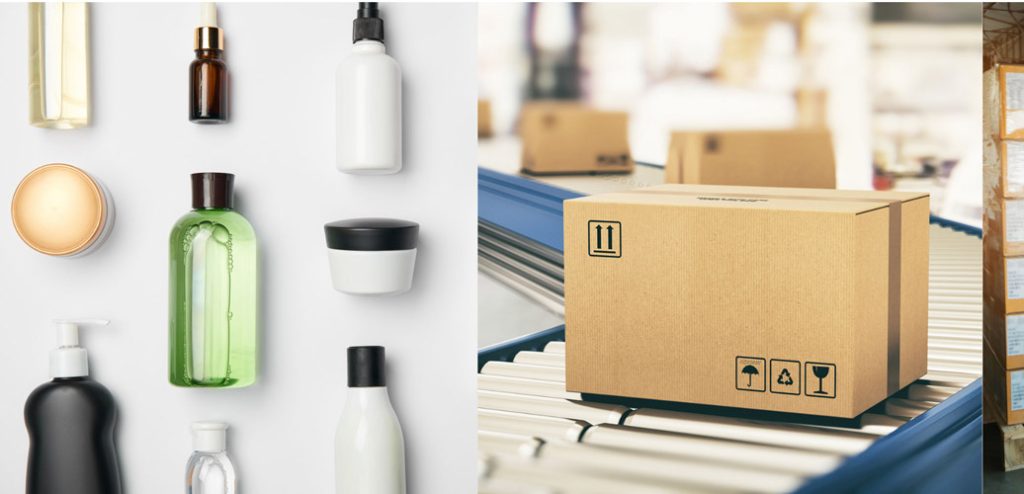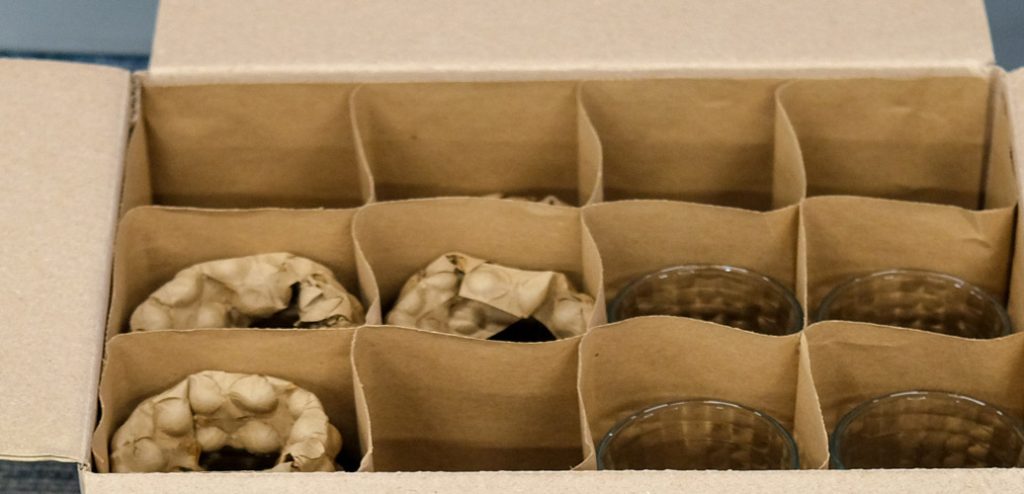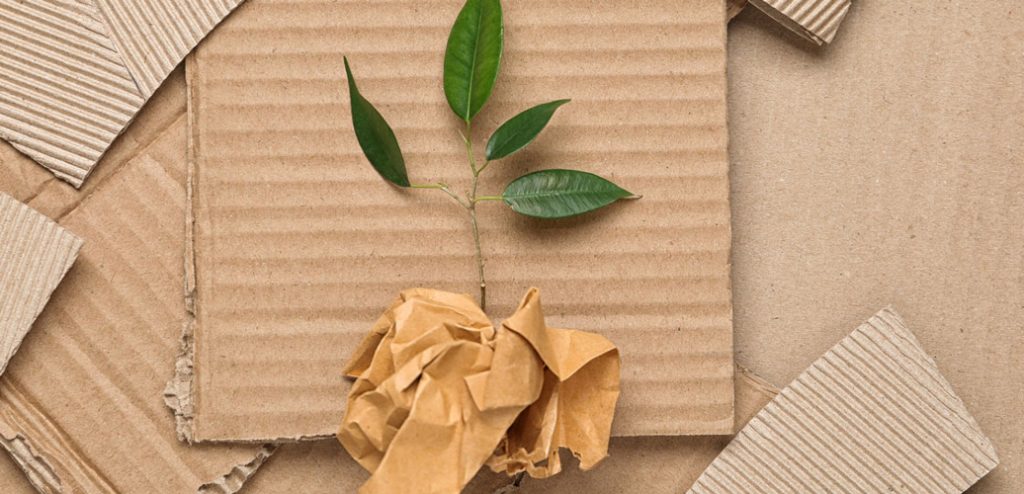“True optimization is the revolutionary contribution of modern research to decision processes.”
– George Dantzig
In our Packaging Optimization Series:
Want to read later or share this information with your team? Download our Guide to Packaging Optimization.
There are several aspects to examine when optimizing your packaging, including materials selection, packaging protection, cost, and sustainability. This guide will give you an overview of all of these factors so that you can make the best choices for your business.
PACKAGING MATERIALS

There are many factors to consider when choosing the best packaging material for your product.
Levels of packaging. First, you’ll need to determine the packaging levels required for your products, including primary, secondary, and tertiary. You may need packaging for all three levels, just two, or perhaps only one.
Deciding on materials. After determining the necessary levels, you can begin researching the most effective materials for packaging your products at each level. Asking the right questions is the best way to find the right solution.
Questions to ask. Here’s a short list to get you started:
- What is the product form?
- What are the product characteristics?
- What levels of protection are needed?
- How will the package be used?
- Which materials are sustainable or recyclable?
- How much will it cost?
- How will it be transported?
- How will the product be stored?
Materials commonly used. Once you’ve answered these critical questions, you’re ready to consider the pros and cons of using the various packaging materials available.
List of materials. Here’s a list of packaging materials most often used:
- chipboard
- corrugated cardboard
- paperboard and substrates
- paper
- plastic
- aluminum
Are you researching your options for packaging materials? We expand on each of the questions you should be asking and discuss the attributes of these materials in our article, Types of Packaging Materials.
COSTS OF PACKAGING

The price of packaging is a significant expense for any business, regardless of the industry.
Now, more than ever, examining and studying packaging optimization solutions that could improve your packaging efficiencies and operational costs is essential. Global supply, logistical bottlenecks, world events, and production line delays have made this evaluation and research more critical than ever.
Fortunately, understanding the cost factors can help you make the most cost-efficient choices. These are the core factors that impact the price of packaging:
1. Materials
2. Labor
3. Shipping
4. Warehousing
5. Fulfillment
Our article, The Real Price of Packaging, discusses these cost factors more in-depth.
PROTECTIVE PACKAGING

The only way to ensure that your products arrive safely at their destination is to be proactive with your packaging protection, choose suitable materials, and find the appropriate provider.
What is Protective Packaging? Protective packaging is any packaging designed to protect, support, stabilize, and insulate products from damage or deterioration throughout the entire supply chain, especially during shipping and transport. In some situations, protective packaging is used as a primary packaging component, but these are the more common applications for secondary packaging.
Types of protective packaging:
- bubble wrap
- air pillows/air bags
- corrugated wrap
- molded wrap
- styrofoam peanuts
- corner blocks
- angle/edge boards
- packaging inserts
- void fillers
Factors in choosing the best protection. There are numerous factors to weigh when deciding what type of protective packaging to use. Not sure if your product needs protective packaging? Here are some considerations that may help you make this determination:
- the product’s fragility
- the product’s weight
- the product’s size/dimensions
- the product’s edges and corners
- the number of products per package
- the shipping method
- the excess space in your current packaging solution
- the product’s value
- the product’s various and ultimate destinations
- the customer experience you want to provide
- the sustainability goals of your company
Do you need to evaluate your packaging protection? For a closer look at choosing the right protection, check out our article, Protective Packaging: Avoid Damaged Goods and Customer Returns.
SUSTAINABLE PACKAGING

A guide on packaging optimization wouldn’t be complete without examining the sustainability of your packaging choices.
The need for sustainability. As climate change becomes more severe and resources dwindle, more companies are forced to the forefront of environmentalism, and the need for sustainable packaging multiplies. According to new research by Greenpeace, only 5% of the mountains of plastic waste generated by US households last year was recycled (you can download the report here), and waste packaging from the newly legalized marijuana industry is adding to the current plastic waste crisis. Companies must start thinking outside of their comfort zone in order to meet the challenges of today’s rapidly changing global environment, gradually transitioning into a circular economic model.
Many consumers are avoiding companies that are not seeking alternative packaging solutions, such as paper or cardboard. This is the reality.
How is sustainable packaging defined? The sustainable packaging definition generically covers any packaging with a lower environmental impact. The following variables can be used to analyze sustainable packaging methods:
- Sustainability
- Performance
- Sortability
- Cost
The Sustainable Packaging Coalition (SPC) has identified eight factors that make up a sustainable package:
- Beneficial, safe, and healthy for individuals and communities throughout its lifecycle
- Able to meet market criteria for performance and cost
- Sourced, manufactured, transported, and recycled using renewable energy
- Able to maximize the use of renewable or recycled source materials
- Manufactured using clean production technologies and best practices
- Made from materials healthy in all probable end-of-life scenarios
- Physically designed to optimize materials and energy
- Effectively recovered and utilized in biological or industrial cradle-to-cradle cycles
Sustainable packaging materials. Various sustainable packaging materials are available today, each with different benefits and drawbacks. Some commonly used sustainable packaging materials include paper and cardboard, which can be recycled 5-7 times, organic fabrics, and biomaterials.
Sustainable packaging techniques. Businesses can reduce the amount of material and resources used and save money in the long term by using sustainable packaging methods. Some of the most popular sustainable packaging techniques include:
- Bundling
- Moving more with less
- Increasing density
- Utilizing fewer materials and resources
Advantages of using sustainable packaging. There are many advantages to using sustainable packaging, including:
- Cost-effectiveness
- Minimizing your carbon footprint
- Supporting your branding efforts
Want to dive deeper into sustainable packaging? Learn more about the drivers and future of sustainable packaging in our article, Sustainable Packaging Solutions.
Infographic. See our infographic illustrating the SPC’s eight criteria for Sustainable Packaging, What is Sustainable Packaging? [Infographic].
IMPROVE PACKAGING LINE EFFICIENCY

Improving your packaging line efficiency can involve either making improvements to what you already have in place and/or upgrading your operation with more advanced equipment or automation.
In either case, you’ll want to evaluate things like floor space, downtime, throughput, packaging materials, waste, and employee training. Some benefits of an optimized packaging line include improved efficiency, quality control, safety, and customer satisfaction.
- Productivity: The benefits of increased efficiency are clear. Not only does it keep things on schedule, but it also reduces labor costs associated with overtime, absenteeism, and turnover.
- Quality: A streamlined process leads to better quality control as employees can focus more on quality and less on their physical environment.
- Safety: Optimal production speeds create a safer work environment by allowing employees more time to react to potentially dangerous situations.
- Customer Satisfaction: Reducing lead times can positively impact customer satisfaction by helping to ensure that they receive ordered products in a timely manner. In turn, this can lead to increased brand loyalty and repeat purchases.
Are you interested in making your packaging line more efficient? We’ve got some tips for you in our article, Improve Packaging Line Efficiency.
OPTIMIZING YOUR PICK-AND-PACK WAREHOUSE

Running a smooth, efficient pick-and-pack warehouse is no small feat.
It requires a combination of strategic planning, smart technology adoption, well-trained personnel, and meticulous inventory management systems.
You’ll want to explore key aspects like location selection, warehouse layout design, and the critical role of technology and equipment. Understanding the various picking and packing methods employed in the industry will help you select the method that best suits your business needs.
Of course, challenges are a part of any business, and warehousing is no exception. Delving into topics such as space optimization, time management, and quality control will enable you to identify, address, and prevent many issues from hampering your operations.
Finally, you’ll want to seek improvement options and best practices for your pick-and-pack operations, focusing on workflow streamlining, automation, efficient packaging techniques, and embracing sustainability.
Interested in optimizing your pick-and-pack operations? We’ve got some tips for you in our article, Optimizing Your Pick-and-Pack Warehouse.
WAREHOUSE SPACE OPTIMIZATION

Warehouse space optimization is obviously not a one-size-fits-all solution; the best solutions are often dependent on the scale of business operations.
For startups or small-scale warehouses, decisions are often driven by budget constraints, limiting choices to low-cost, but effective measures. If that’s you, your focus may likely be on:
- revisiting current layouts
- maximizing existing vertical space, and
- looking at agile preparations for peak demand seasons
On the other hand, the introduction of cutting-edge solutions like Augmented Reality (AR) for picking can set you up for scalable and flexible solutions that can grow with you, without overwhelming initial investments.
Medium-sized, growing warehouses may be at a pivotal juncture, where they can balance between the foundational methods of small operations and the more advanced systems of larger entities. If you’re in this category, your challenges typically revolve around:
- expanding storage needs
- refining established processes, and
- ensuring adaptability for future growth
Advanced layout optimization, integration of comprehensive Warehouse Management Systems (WMS), and the incorporation of mobile and dynamic shelving systems can cater to these exact needs. The adoption of IoT sensors for space insights offers a glimpse into the future of warehousing, and could prepare you for the next leap.
For established or large-scale warehouses, the stakes are high. Their optimization strategies are influenced by:
- the demands for unparalleled efficiency
- swift operations, and
- precise accuracy
As behemoths in the storage industry, they can leverage full automation, diving deep into data analytics for predictive storage adjustments. If you’re at this level, you may have the resources to consider unique solutions like underground storage. In addition, you may be in a better position to innovate using technologies such as robot-assisted picking and AI-driven predictive storage. Modular design approaches could also ensure your spaces remain versatile and responsive to fluctuating market demands.
The journey of warehouse space optimization is often a reflection of a business’s growth trajectory, with each phase presenting its unique challenges and solutions. That’s why we’ve developed a warehouse space optimization checklist to help you consider your options at each stage.
Get the full checklist, Warehouse Space Optimization including a downloadable PDF.
